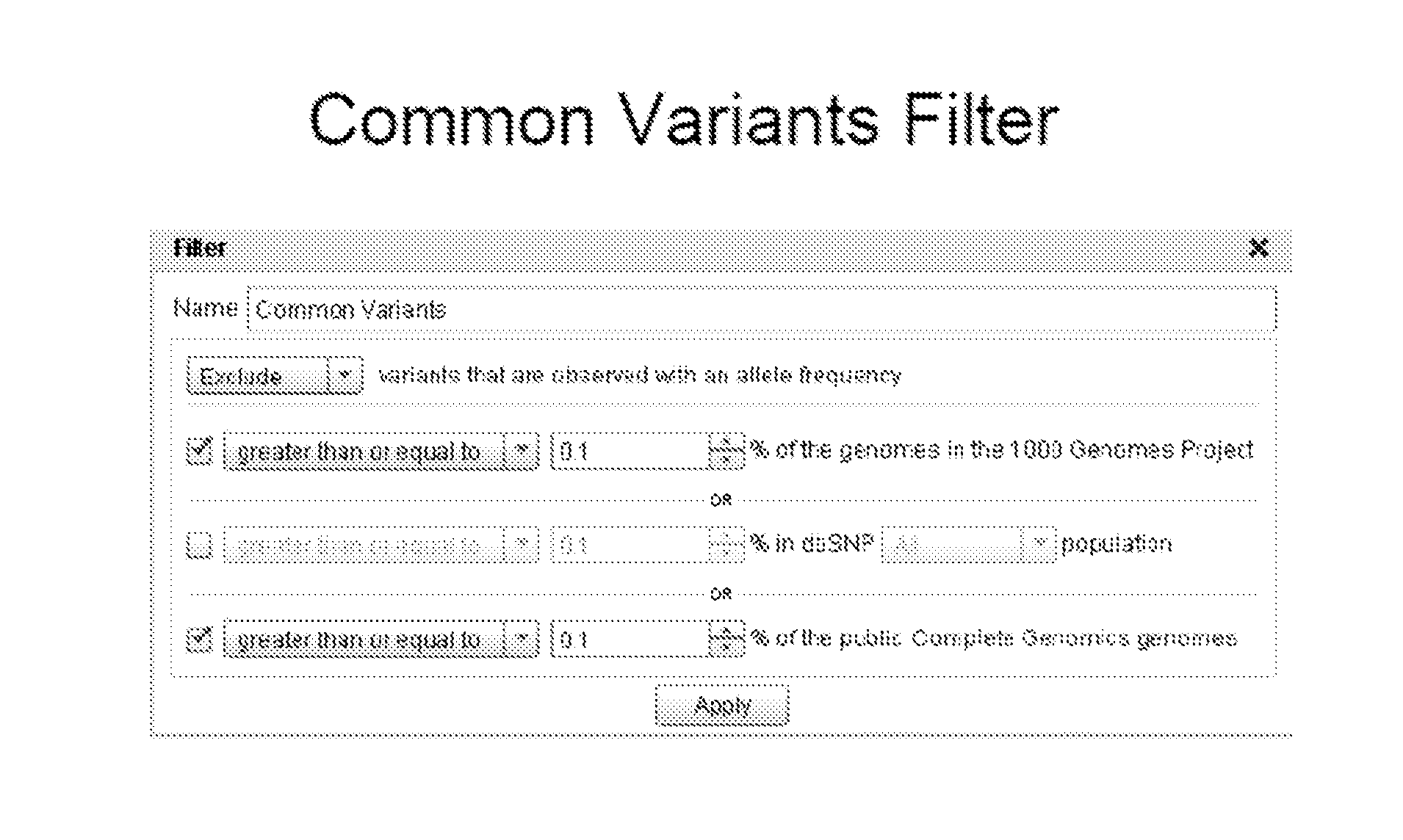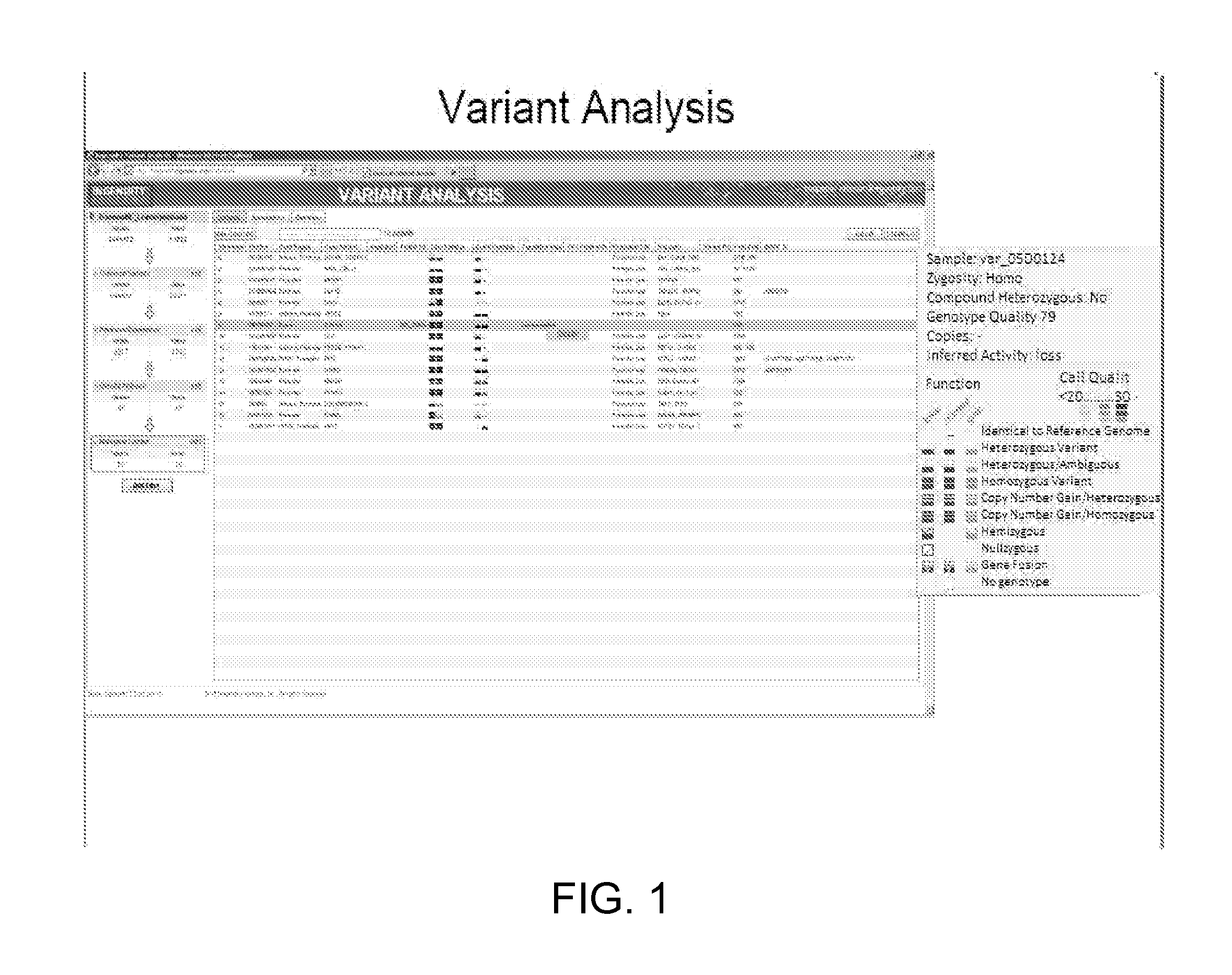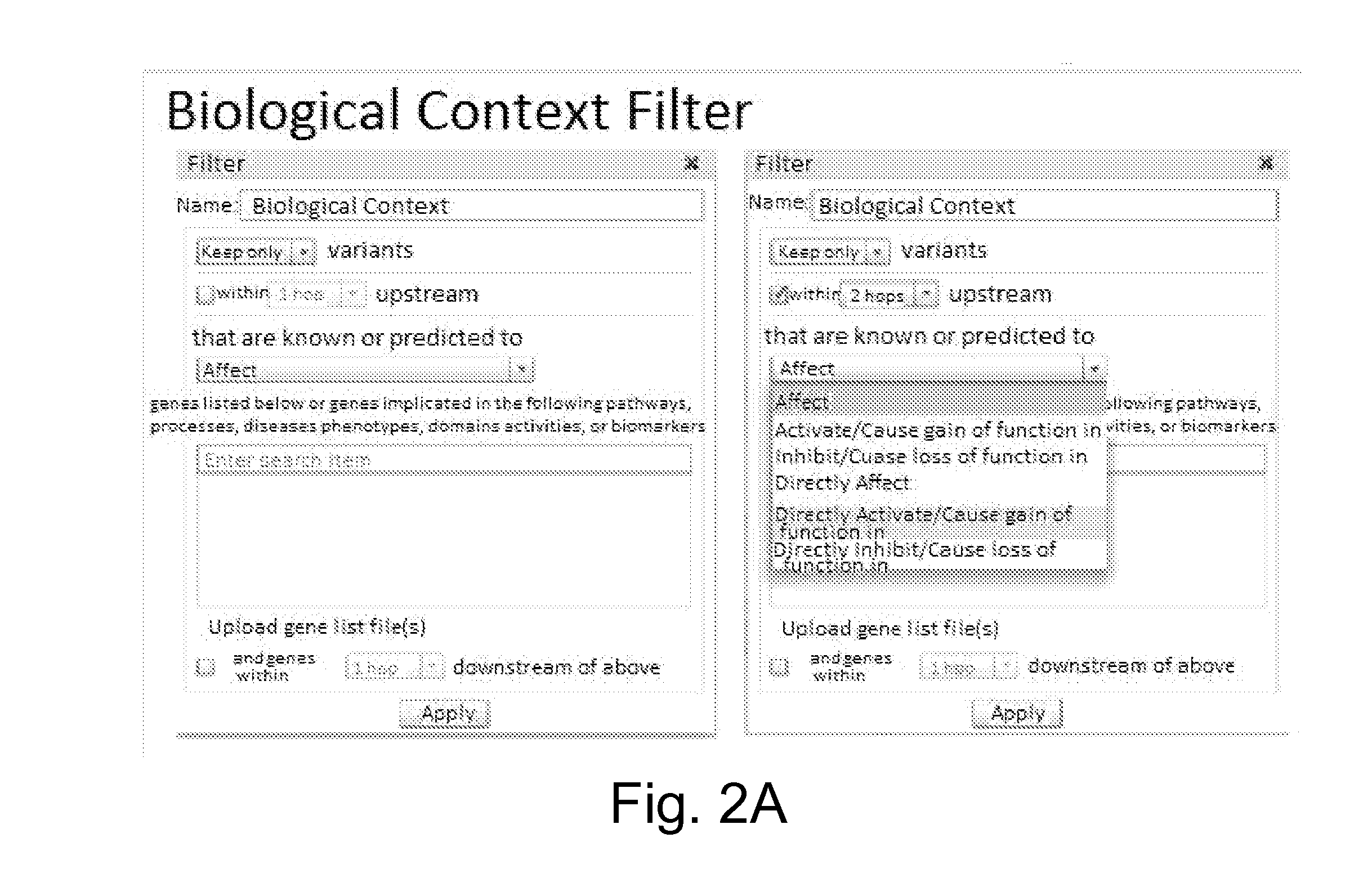Methods and Systems for Identification of Causal Genomic Variants
a genomic variant and method technology, applied in the field of methods and systems for identifying causal genomic variants, can solve problems such as difficult analysis of this massive amount of information
- Summary
- Abstract
- Description
- Claims
- Application Information
AI Technical Summary
Benefits of technology
Problems solved by technology
Method used
Image
Examples
example 1
Identification of the Role of IL11RA in Craniosyntosis by Analyzing Comparative Whole Genome Sequencing Results Using the Ingenuity Knowledge Base
[0356]Variants are Identified.
[0357]The complete human genome sequence of four subjects is loaded into the system: two genomes from children with a hereditary form of craniosynostosis, and two from their parents who are both unaffected by the disease. The genome of affected Child1 includes 3,714,700 variants, the genome of affected Child2 includes 3,607,874 variants, the genome of the unaffected father includes 3,677,130 variants and the genome of the unaffected mother includes 3,779,223 variants. A total of 5,394,638 variants are found in the combination of the four genomes.
[0358]a Common Variant Filter is Applied.
[0359]Variants observed in one or more of the subjects in the Complete Genomics 69 Genomes database or the 1000 genome project subjects not observed to have the disease in question are subtracted, reducing the total number of va...
example 2
Identifying Prospective Driver Variants for Glioblastoma
[0368]A complete or partial human genome sequence of a glioblastoma patient's tumor and another similar genome sequence from the patient's healthy tissue is loaded into the system.
[0369]Variants that are observed in one or more of the subjects in the Complete Genomics 69 Genomes database or one or more of the subjects in the 1000 genome project not observed to have the disease in question are subtracted, reducing the total number of variants to 933,866 (FIG. 14). These eliminated DNA variants tend to be common in the population and are therefore thought to be unlikely to cause a rare hereditary disease.
[0370]Variants that were not previously observed to disrupt a biological function or not predicted to do so are identified using the knowledge base and also subtracted, reducing the number of remaining variants to 10,527. The excluded variants meet one or more of the following criteria:[0371]Not directly associated with a mutatio...
example 3
Identifying DNA Variants Toward Development of an Individualized Cancer Therapeutic RNA Cocktail
[0383]FIG. 15 illustrates the use of a cascade of filters to identify variants for use in a cancer therapeutic RNA cocktail. The complete human genome of a patient's tumor and the patient's normal tissue is loaded into the system providing ˜25,000 variants between the two data sets.
[0384]The variants that are unique to the tumor and not present in the normal tissue are kept and the rest are removed, reducing the number of variants to ˜2,000.
[0385]Variants that are not synonymous are candidates to yield a protein-coding difference that the patient's immune system could potentially use to identify tumor cells as different from normal cells and therefore “foreign”. These non-synonymous variants are kept and the rest are removed, reducing the number of variants to ˜700.
[0386]Tumor-specific antigens that can be recognized by a patient's immune system present likely candidates for the immune sy...
PUM
 Login to View More
Login to View More Abstract
Description
Claims
Application Information
 Login to View More
Login to View More - R&D
- Intellectual Property
- Life Sciences
- Materials
- Tech Scout
- Unparalleled Data Quality
- Higher Quality Content
- 60% Fewer Hallucinations
Browse by: Latest US Patents, China's latest patents, Technical Efficacy Thesaurus, Application Domain, Technology Topic, Popular Technical Reports.
© 2025 PatSnap. All rights reserved.Legal|Privacy policy|Modern Slavery Act Transparency Statement|Sitemap|About US| Contact US: help@patsnap.com



